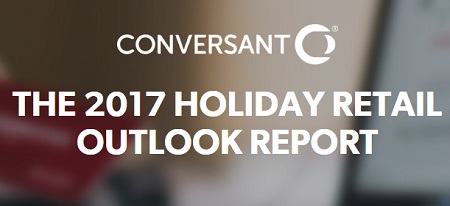The majority (92%) of consumers’ shopping purchases will be influenced by offers and promotions this Christmas, according to research from the 2017 Holiday Retail Outlook Report by Conversant, Epsilon and LoyaltyOne.
Free shipping (58%) tops customers’ Christmas offers wish list, followed by money off purchases (48%) and “buy one, get one free” offers from retailers (37%). More than half (59%) of shoppers will be using loyalty program rewards for their Christmas purchases and a fifth (21%) of consumers want to gain loyalty points or rewards though their Christmas shopping.
Elliott Clayton, Vice President of Media UK, Conversant, comments, “With retailers making 40% or more of their yearly revenue over the Christmas period, it’s a critical time of year. But competition for business is fierce and retailers need to understand what will best motivate their customers to shop with them. Nobody likes to be the person who offers that terrible Christmas gift and the same principle applies to brands and their Christmas promotions.”
Andy Mulcahy, Strategy and Insight Director, IMRG, adds “Delivery charges can have quite a significant impact on shopper psychology, even when that charge is quite small. A previous survey found that 56% of respondents had abandoned their baskets due to delivery concerns, with a further 68% saying additional costs of delivery were the main reason for doing so[1].”
“This is why we see so many retailers competing over delivery promise, offering free delivery – including next-day, if spend is over a certain threshold – and in some cases free returns. This may be an issue of particular sensitivity during the major discounting period around Black Friday – as shoppers are very focused on getting the best possible deal, seeing additional charges added could have a negative impact on a decision to purchase,” comments Mulcahy.
Apart from offers and promotions, the report also highlights the importance of non-controllable, external factors on consumers’ Christmas purchases, with the second greatest influence on consumers for the upcoming holiday season being family and friends (84%). The products themselves do also play a role in purchasing decisions, as consumers are influenced by the product information available on a store’s website (79%) and by product reviews (77%).
Christmas through the ages
The top influences on millennials’ Christmas shopping are loyalty programs and fast checkout. Three-quarters (75%) of millennials would also be very likely to shop at a retailer this Christmas if in-store technology is available.
Fast checkout is also a top influence on Christmas shopping for Gen X (40%), along with the availability of technology, ratings and reviews. The majority (70%) of Gen Z will have a say in family purchasing decisions, with rewards programs, in-stock availability, discounts and coupons topping their Christmas wish list.
Clayton concludes: “The differing generational expectations that’s highlighted in the report is just one example that shows why brands need to be able to communicate with consumers on an individual level. But truly personalised marketing isn’t just a Christmas fad – this is a method of marketing that businesses have generated, and are continuing to generate increased return from throughout the year.”

